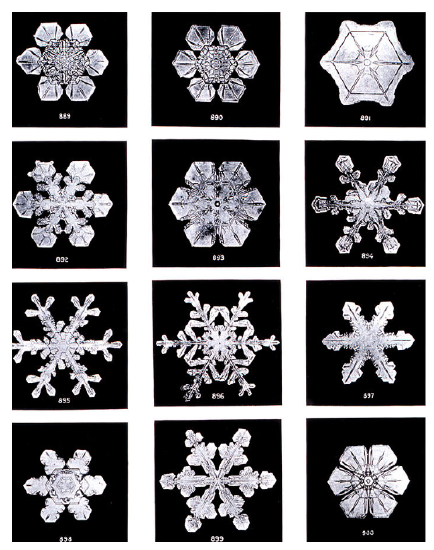1.1: Knowing and Believing
- Page ID
- 138507
\( \newcommand{\vecs}[1]{\overset { \scriptstyle \rightharpoonup} {\mathbf{#1}} } \) \( \newcommand{\vecd}[1]{\overset{-\!-\!\rightharpoonup}{\vphantom{a}\smash {#1}}} \)\(\newcommand{\id}{\mathrm{id}}\) \( \newcommand{\Span}{\mathrm{span}}\) \( \newcommand{\kernel}{\mathrm{null}\,}\) \( \newcommand{\range}{\mathrm{range}\,}\) \( \newcommand{\RealPart}{\mathrm{Re}}\) \( \newcommand{\ImaginaryPart}{\mathrm{Im}}\) \( \newcommand{\Argument}{\mathrm{Arg}}\) \( \newcommand{\norm}[1]{\| #1 \|}\) \( \newcommand{\inner}[2]{\langle #1, #2 \rangle}\) \( \newcommand{\Span}{\mathrm{span}}\) \(\newcommand{\id}{\mathrm{id}}\) \( \newcommand{\Span}{\mathrm{span}}\) \( \newcommand{\kernel}{\mathrm{null}\,}\) \( \newcommand{\range}{\mathrm{range}\,}\) \( \newcommand{\RealPart}{\mathrm{Re}}\) \( \newcommand{\ImaginaryPart}{\mathrm{Im}}\) \( \newcommand{\Argument}{\mathrm{Arg}}\) \( \newcommand{\norm}[1]{\| #1 \|}\) \( \newcommand{\inner}[2]{\langle #1, #2 \rangle}\) \( \newcommand{\Span}{\mathrm{span}}\)\(\newcommand{\AA}{\unicode[.8,0]{x212B}}\)
Knowing and Believing
Supplies Needed
- Activity sheet for each student (attached), or statements projected on a screen for the class to see
- Writing utensil
- Textbook
Introduction
Procedure
- Distribute one activity page to each student, or project the statements listed below onto a screen. This activity can be done individually, in groups, or as a class. There is also an opportunity to start the activity individually, and to consequently take up answers in a pair-and-share or class discussion.
- Before beginning the activity, students should write the definitions of ‘knowledge’ and ‘belief’ in their own words. Subsequently, they should compare these with the definitions put forth in the textbook. Putting class concepts into one’s own words helps to solidify concepts for students.
- Next, students should be instructed to read each of the following statements and indicate on the activity sheet, adjacent to each example phrase, whether the statement reflects knowledge or belief.
- The sun rises in the East and sets in the West.
- All living things need water to survive.
- God is real.
- No two snowflakes are identical.
- Lord of the Flies is the best novel ever written.
- Ottawa is the capital of Canada.
- The Mona Lisa is the most beautiful painting in the world.
- Broccoli is delicious.
- Carbon monoxide is dangerous to humans in large quantities.
- Dr. G is the best professor.
- After responding to the given statements, each student should write a statement of belief and a statement of knowledge on the activity sheet.
- Once students have labelled each statement accordingly, and written their own statements, discuss in groups, or as a class.
- Ensure that you bring forth any discussions as to why students labelled statements as belief or knowledge into a classroom discussion. Students should use the textbook definitions of “knowledge” and “belief” to aid in justifying their answer.
- Instructors can further engage the class by discussing why it is important for anthropologists to be cognizant of both knowledge and beliefs-- this can introduce the idea of anthropologists as both scientists and cultural relativists.
- Additionally, the idea that knowledge and beliefs can sometimes become ‘tangled’ should be addressed. For instance, it is not uncommon to see scientific knowledge (e.g. that climate change is real) as a belief, or a belief (e.g. that race is biologically founded) as knowledge. As such, differentiation is important.
Statement Answer Key
| Statement | Belief or Knowledge? |
|---|---|
| The sun rises in the East and sets in the West. | Knowledge |
| All living things need water to survive. | Knowledge |
| God is real. | Belief |
| No two snowflakes are identical. | Knowledge |
| Lord of the Flies is the best novel ever written. | Belief |
| Ottawa is the capital of Canada. | Knowledge |
| The Mona Lisa is the most beautiful painting in the world. | Belief |
| Broccoli is delicious. | Belief |
| Carbon monoxide is dangerous to humans in large quantities. | Knowledge |
| Dr. G is the best professor. | Belief |
| Write your own statement of belief. | To be evaluated |
| Write your own statement of knowledge. | To be evaluated |


